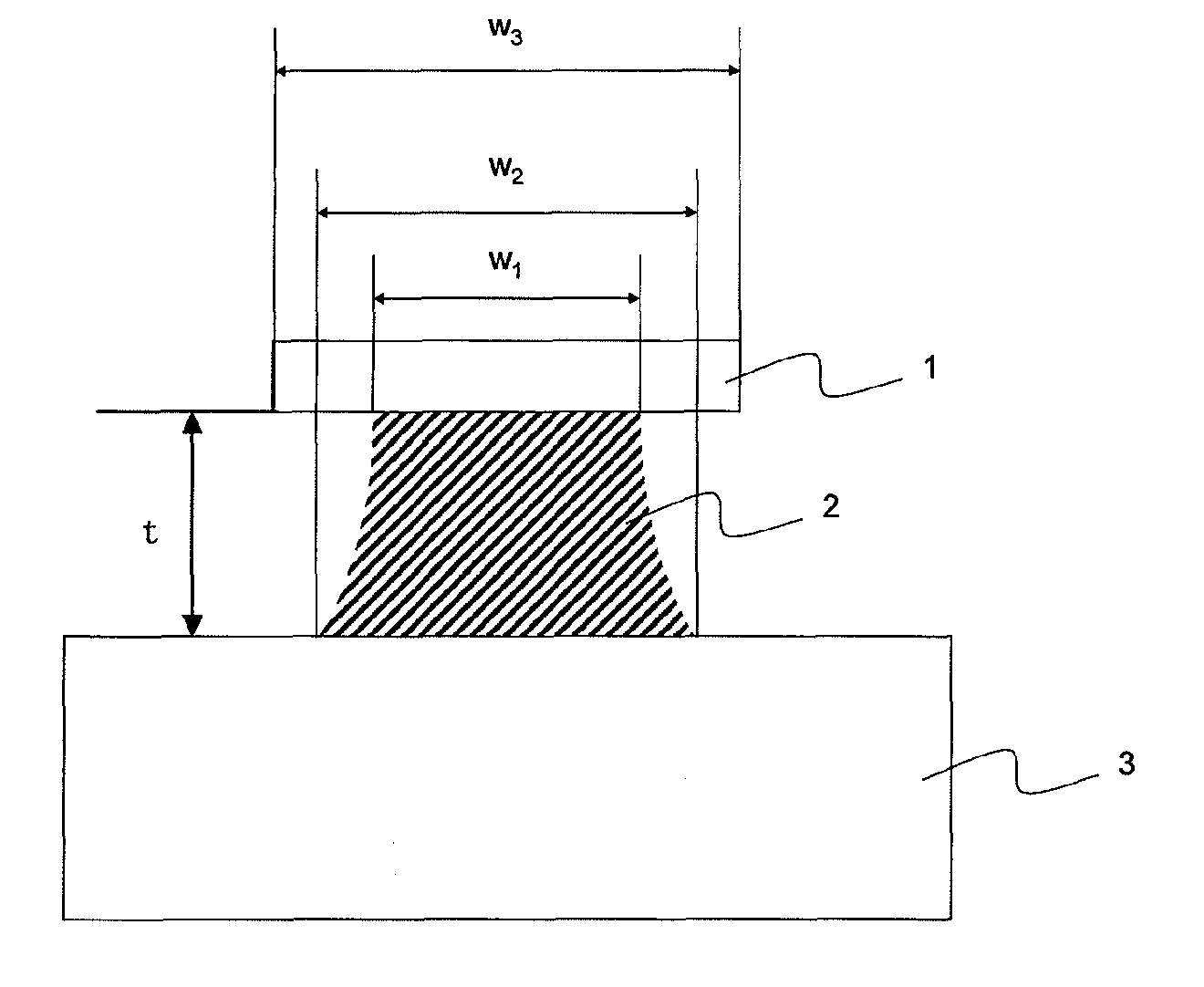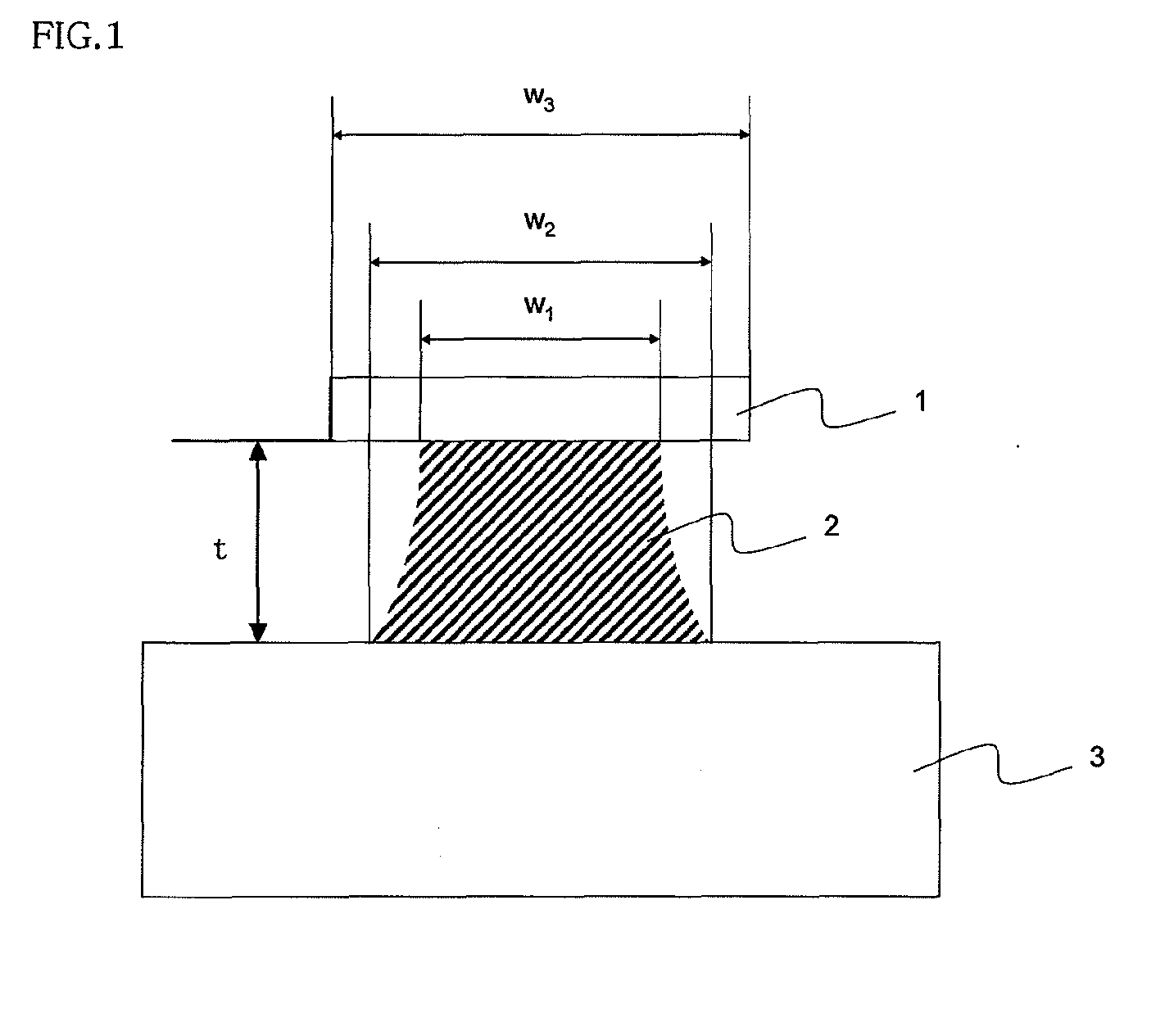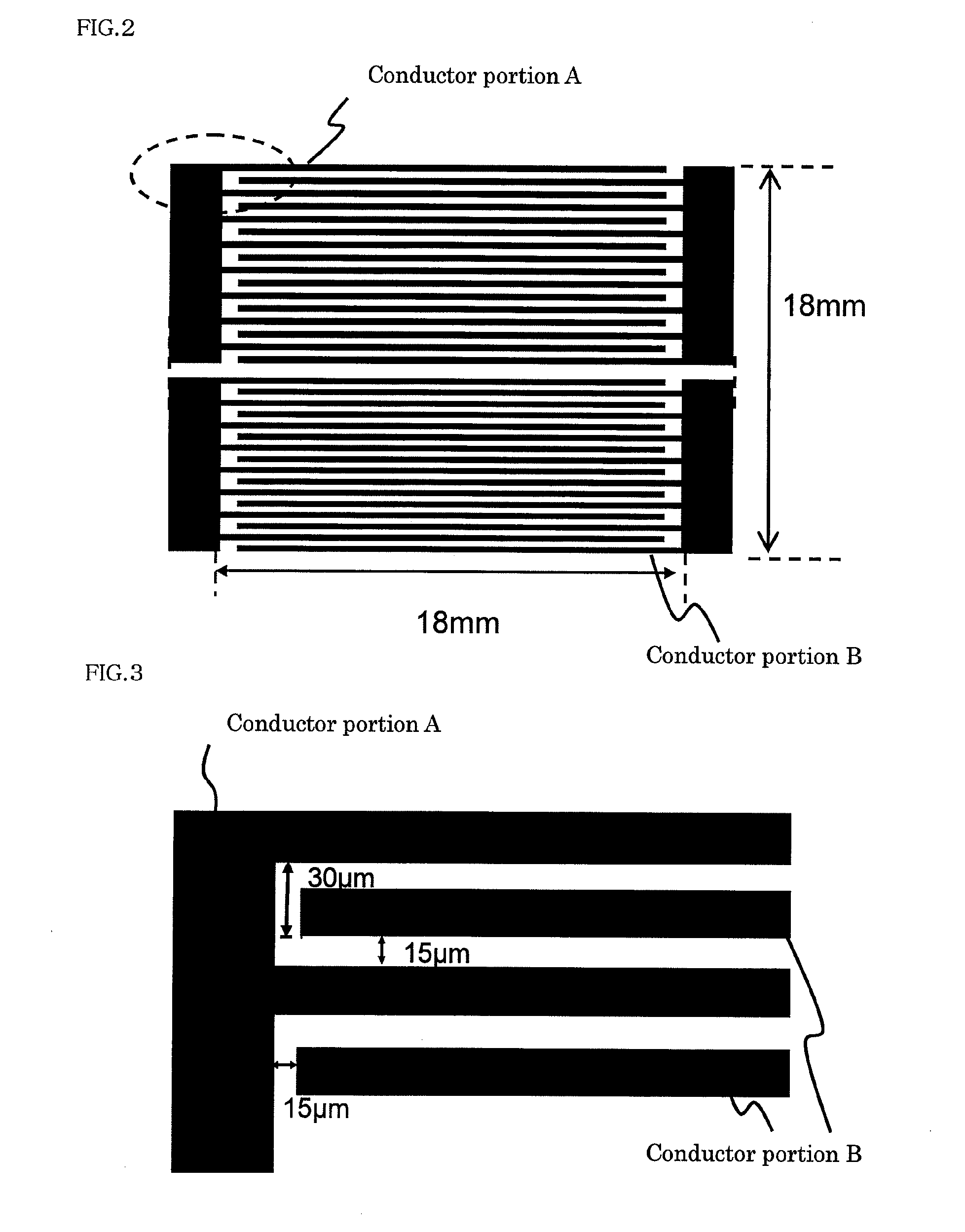Etchant for copper or copper alloy, liquid for etching pretreatment, and etching method
a technology of liquid etching and copper or copper alloy, which is applied in the direction of printed circuit manufacturing, surface treatment compositions, chemistry apparatus and processes, etc., can solve the problems of reducing the top or bottom width of the conductor pattern, unable to keep the area necessary for mounting parts, and difficult to produce printed wiring boards having a high circuit density, etc., to achieve enhanced effect on the improvement of product yield and high degr
- Summary
- Abstract
- Description
- Claims
- Application Information
AI Technical Summary
Benefits of technology
Problems solved by technology
Method used
Image
Examples
example 1
Preparation of Etchant
[0062]Water was added to 27 g (10 g as an anhydride) of a commercially available 40° Be iron (III) chloride aqueous solution (concentration 37 mass %) and 0.70 g (0.50 g as an anhydride) of oxalic acid dihydrate up to a total amount of 1 kg, to prepare an etchant containing 1.0 mass % of iron (III) chloride and 0.050 mass % of oxalic acid.
[0063]1 to be Etched>
[0064]A positive liquid resist was applied to the surface of a copper-clad laminate obtained by bonding a 1.6 mm thick glass epoxy substrate (FR-4 standard) and a 12 μm thick electro-deposited copper foil to each other, such that a layer on the surface had a dry thickness of 6 μm, followed by drying. Then, an exposure through a pattern having line / space widths of 15 μm / 15 μm for evaluation was carried out, and then a resist pattern was formed by development and washing with water to make a material 1 to be etched.
[0065]
[0066]The above etchant adjusted to 30° C. was ejected to the material 1 to be etched by...
examples 2-8
[0067]Etchants containing iron (III) chloride and oxalic acid having concentrations shown in Tables 1 and 2 were prepared in the same manner as in Example 1, and the same materials to be etched as that of Example 1 were spray-etched under ejection conditions as specified. (1) Ejection time periods X (second) it took to reach w2=w3 (15 μm), (2) w1 and w2 when the ejection time periods were set to 1.2 times as long as X and (3) w1 and w2 when the ejection time periods were set to 2.0 times as long as X were measured. Tables 1 and 2 show the results.
example 9
Preparation of Etchant
[0071]Water was added to 13.5 kg (5.00 kg as an anhydride) of a commercially available 40° Be iron (III) chloride aqueous solution (concentration 37 mass %) and 1.40 kg (1.00 kg as an anhydride) of oxalic acid dihydrate up to a total amount of 100 kg, to prepare 100 kg of an etchant containing 5.0 mass % of iron (III) chloride and 1.0 mass % of oxalic acid.
[0072]
[0073]Grams of sulfuric acid (concentration 98 mass %) was added to 980 g of water, and they were fully mixed to prepare a pretreatment liquid having a concentration of 2.0 mass %.
[0074]2 to be Etched>
[0075]A positive liquid resist was applied to the surface of a copper-clad laminate obtained by bonding a 40 μm thick polyimide insulating material and a 9 μm thick electro-deposited copper foil, such that a layer on the surface had a dry thickness of 6 μm, followed by drying. A resist pattern of 100 blocks having a comb type wiring shown in FIG. 2 each was formed thereon to make a material 2 to be etched....
PUM
| Property | Measurement | Unit |
|---|---|---|
| pH | aaaaa | aaaaa |
| thickness | aaaaa | aaaaa |
| thickness | aaaaa | aaaaa |
Abstract
Description
Claims
Application Information
 Login to View More
Login to View More - R&D
- Intellectual Property
- Life Sciences
- Materials
- Tech Scout
- Unparalleled Data Quality
- Higher Quality Content
- 60% Fewer Hallucinations
Browse by: Latest US Patents, China's latest patents, Technical Efficacy Thesaurus, Application Domain, Technology Topic, Popular Technical Reports.
© 2025 PatSnap. All rights reserved.Legal|Privacy policy|Modern Slavery Act Transparency Statement|Sitemap|About US| Contact US: help@patsnap.com



